Genetically Modified Information
{date}Definitions:
GM = genetically modified
GMM = genetically modified micro-organism
Background
Much has been written about the use and consumption of Genetically Modified (GM) food, and Protein Feeds Ltd. takes the issues very seriously and have done extensive research on this area.
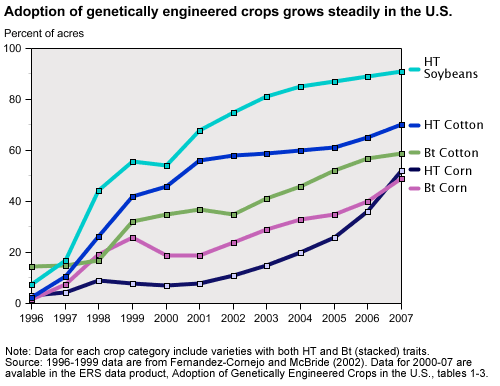
The Current Situation
The Government supports mandatory labelling requirements which allow consumers to make an informed choice. There are European Union rules to ensure that GM products can be traced and labelled throughout the food chain so customers can choose whether to buy GM products or not.
Crops, products or individual food ingredients must be traced and labelled if they intentionally consist of GM organisms, however small the amount, or are derived from a genetically modified organism.
In addition if a product has an adventitious or technically unavoidable GM presence above 0.9% in any one ingredient it must be labelled.
GM material in animal feed
Before a genetically modified organism (GMO) can be either grown or marketed in the European Union (EU), it must be granted a marketing consent (i.e. authorised) under European Community (EC) legislation - EC Regulation 1829/2003 laying down the authorisation procedures for GM food and feed (the 'GM Food and Feed Regulation').
This requirement applies to both living GMOs such as rapeseed and soya beans, and to feed and food ingredients derived from the processing of GM crops. The authorisation procedure includes a safety assessment by the European Food Safety Authority (EFSA). On the basis of these assessments, there is no reason to suppose that GM feed presents any more risk to farmed livestock than conventional feed.
GM feed, which is very unlikely to contain viable GMOs, is digested by animals in the same way as conventional feed. Food from animals fed on authorised GM crops is considered to be as safe as food from animals fed on non-GM crops.
GM ingredients used currently in UK dairy feed
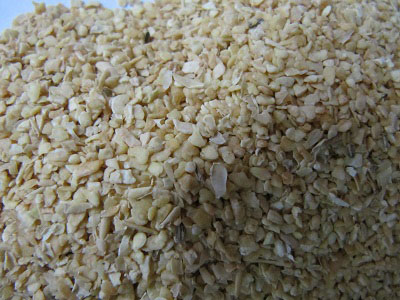
At present there are two principal ingredients in UK dairy rations – soya and maize gluten – which are likely to be either GM or GM-contaminated, unless cargoes are explicitly certified as being GM-free.
This is because these crops are largely sourced from countries where GM crops are grown commercially and not segregated from their non-GM counterparts within the supply chain.
Wheat Feed Pellets

-
Wheat Feed is a general term applied to the mixture of wheat offal arising from modern flour mills. It is subject to relatively high degrees of variance in terms of pellet size and consistency, depending on its source. Generally, it is a mealy, fibrous material containing unseparated bran and various other starchy fractions arising from the later stages of the milling process.
-
A by-product of flour milling, Wheatfeed comprises of Wheat Bran, Endosperm and other starch screenings. The increase of high bran and wholemeal breads in recent years has improved the nutritional value of Wheatfeed.
-
Although favoured in pig and poultry rations, wheat feed is suitable to all livestock. It offers a good source of fibre and while the digestible crude protein level is high, it tends to be rapidly degraded in the rumen.
This last characteristic of wheat feed makes it less popular among ruminants. -
Highly digestible, but quality varies between production plants. A good source of phosphorus, but low in calcium, sodium and vitamins.
Wheat Feed Pellets - Key Features
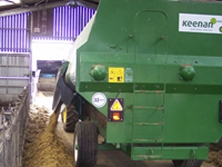
-
High Starch
-
Good Pellet Quality
-
Balanced Energy and Protein
-
Consistent analysis
-
Can suit all feeding systems
-
High in digestible fibre
-
Non GM
-
Promotes rumen synchrony
-
Promotes health
Wheat Feed analysis on a dry matter basis (%) :
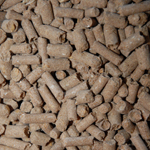
Protein |
Oil |
Fibre |
Ash |
Metabolisable energy (ME) (mega joules/kg dry matter) |
Dry Matter (%) |
|
14.5 |
4 |
9 |
4.2 |
11.5 |
87 |
Feeding
-
Dairy cattle: ~ 2-5kg / head / day
-
Beef cattle: ~ Inclusion rate up to 25% of ration
Storage Limitations

-
Goes mouldy quite quickly and may develop strange flavours. Due to the addition of water at the pelleting stage traces of mould can appear on the outside of the pellet, so long term storage is not recommended. Mouldy material should not be fed to livestock.
-
Must be stored under cool, dry conditions, in a clean dry space or in purpose built bin.
-
Material to have been stored and transported in compliance with UFAS code of practice for the control of salmonella.
Wheat
-
A light brown grain, oval in shape with a deep groove down one side
-
Wheat is a grass with a very swollen grain that when ground, produces a flour that is particularly suitable for the production of bread and biscuits. It is the world's most important crop.
-
Today's wheat crops can trace their origin back over 10,000 years to the einkorn and emmer wheats that grew wild in the middle east.
-
The UK currently produces around 15 million tonnes of wheat each year and around 25% of this is exported to countries around the world.
-
About 40% of the UK crop is used in animal feed rations going to chickens, cows and pigs.
-
Wheat is not very high in protein (10%).
-
Wheat which is of low quality and thus unsuitable for milling, can be fed to domestic animals. It will obviously be worth less than good quality wheat, with its exact value dependent on the extent of the damage.
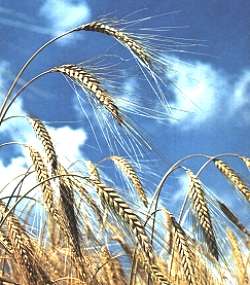
Wheat typical analysis on a dry matter basis (%) :
Protein |
Oil |
Fibre |
Ash |
Metabolisable energy (ME)(mega joules/kg dry matter) |
Dry Matter (%) |
|
10 |
1 |
3 |
2 |
|
13.5 |
89 |
Other requirements
-
UK origin materials to be accompanied by a Post-Harvest Pesticide Declaration.
Will comply with relevant EU and UK legislation.
Feeding wheat to ruminants
-
Beef cattle: Feeding wheat to ruminants requires some caution as wheat tends to be more apt than other cereal grains to cause acute indigestion in animals which are unadapted to it.
-
The primary problem appears to be the high gluten content of wheat which in the rumen can result in a "pasty" consistency to the rumen contents and reduced rumen motility.
-
Whole wheat may be efficiently used by cattle, but it's nutritive value is improved by some form of processing.
-
It is generally conceded that its feeding value is optimized by dry-rolling, coarse grinding or steam-rolling to produce a thick flake. Hence rolled wheat is a good idea.
-
Fine grinding of wheat generally reduces the feed intake and is likely to cause acidosis and/or bloat. Never-the-less, when available for feed, it can be substituted equally for corn on the basis of TDN to a maximum of 25% of dry matter intake for beef.

Storage / Processing
-
Wheat must be stored under dry conditions, in a clean dry space or in purpose built bin.
-
Material to have been stored in compliance with DEFRA code of practice for the control of salmonella, and stores must comply with UFAS Compound Feeds regulations.
Haulage
-
Hauliers will comply with the AIC TASCC Code of Practice for Road Haulage.
Wheat Distillers
-
Distillers Grains are a cereal byproduct of the distillation process.
-
There are two main sources of these grains. The traditional sources were from brewers. More recently, ethanol plants are a growing source.
-
Wheat Distillers is high in energy and protein which is partly degradeable.
-
Contains digestible fibre at moderate levels which makes it ideal for ruminants.
-
Protein is partially rumen undegradeable due to the heat used during the manufacturing process.
Wheat Distillers analysis on a dry matter basis (%) :
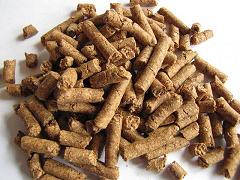
| Protein | Oil | Fibre | Ash |
| 33 | 8 | 6 | 5 |
| Metabolisable energy (ME) (mega joules/kg dry matter) | Dry Matter (%) |
| 13.9 | 89 |
Limits to Usage
-
High copper levels (150 ppm) mean it is unsuitable for feeding to sheep.
-
The free unsaturated oil content should be noted when used in ruminant diets.
Storage / Processing
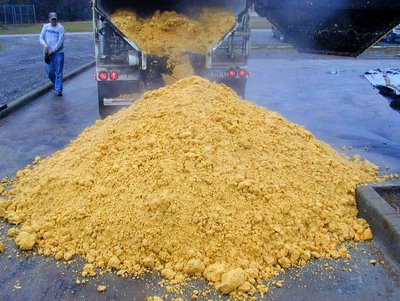
-
Store under dry conditions.
-
Material to have been stored in compliance with DEFRA code of practice for the control of salmonella.


